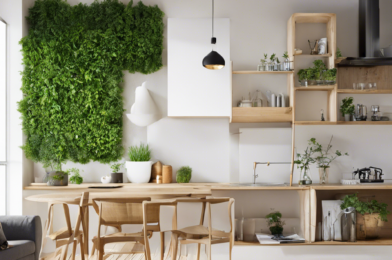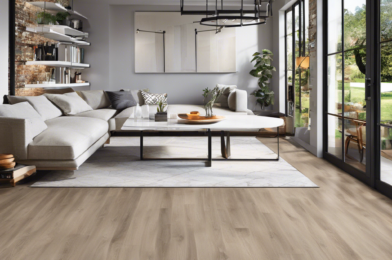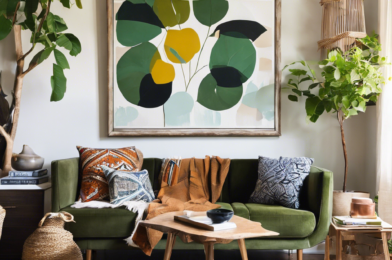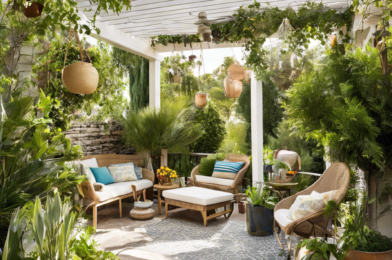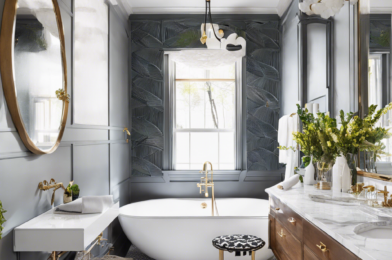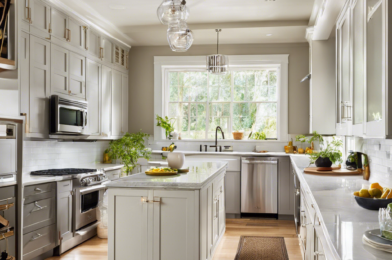# Creating a Kid-Friendly Living Space: Tips and Tricks for a Stylish Yet Functional Home
As a parent, creating a living space that is both stylish and kid-friendly can sometimes feel like a daunting task. But with a few simple tips and tricks, you can have the best of both worlds! Designing a kid-friendly living room or play area is all about striking a balance between a stylish aesthetic and a space that invites fun and creativity. Start by selecting a color palette that is both playful and sophisticated. Opt for warm neutrals or pastels as a base, and then add pops of color through accessories, such as throw pillows, blankets, or fun accent chairs. This way, you can easily update the space as your child grows or your taste changes without a full redesign.
Incorporate different textures to create a cozy and inviting atmosphere. Soft rugs, plush cushions, and cozy blankets not only make the space comfortable for playtime but also add a sense of warmth and dimension to the room. When choosing furniture, look for pieces that are durable and functional. Opt for stain-resistant fabrics and materials that can withstand the wear and tear of little ones. Multifunctional furniture, such as storage ottomans or nesting tables, can help keep the space organized and clutter-free while also providing extra seating or surfaces when needed.
Another important consideration is to ensure the space is safe and childproof. This includes securing heavy furniture to the wall to prevent tipping, covering electrical outlets, and ensuring that windows are secure and have appropriate safety locks. Soft, padded corners on tables and a well-placed foam floor mat can also give you peace of mind as your little ones explore and play. It is crucial to involve your children in the design process and make them feel a sense of ownership over the space. Encourage them to choose their favorite colors or themes and display their artwork and creations proudly.
You can make your own creative solutions to showcase their toys and books in an aesthetically pleasing way. Building a reading nook with cozy cushions and a bookshelf at their level can foster a love of reading and provide a designated space for quiet time. Designing a play area or incorporating a play corner in the living room can be a fun project. Add a playful element to the room with a teepee, a small playhouse, or a canopy tent, and fill the space with their favorite toys and games. To keep the space organized, provide ample storage options, such as baskets, bins, and shelves, which make it easier for children to access their toys and also help them learn to tidy up after playtime.
In addition to dedicated storage spaces, incorporating modular furniture or portable storage solutions can be a great way to adapt the room to your family’s changing needs. As your children grow, their interests and needs will evolve, so choosing versatile pieces that can be rearranged, repurposed, or easily stored away will ensure that the living space remains functional and relevant over time. Encouraging your kids to get involved in the organization process from an early age will also help them develop valuable skills and a sense of responsibility. For instance, you can designate specific bins or baskets for different types of toys and ask them to sort and put away their belongings accordingly.
Bringing nature indoors can add a sense of tranquility to your living space while also providing an opportunity for your children to learn and interact with the natural world. Consider adding indoor plants or creating a small herb garden by the window, teaching your children about responsibility and caring for living things. Additionally, bring the outdoors in with nature-inspired decor, such as wall art, pillows, or rugs featuring greenery or animal motifs. Not only will this design element create a calming atmosphere, but it will also foster a connection to the natural world for your little ones.
Lastly, don’t be afraid to have some fun with décor and accessories! Adding whimsical touches, such as a hanging mobile, fun wall decals, or playful lighting, can really bring the room to life. You can also create a fun feature wall with removable wallpaper or wall stickers, allowing for easy updates as your child’s interests change. Designing a kid-friendly living space is all about embracing creativity and a sense of playfulness while still maintaining a stylish and functional home. So, get creative, involve your little ones in the process, and don’t be afraid to think outside the box! With these tips in mind, you’re well on your way to creating a beautiful and inviting space that the whole family can enjoy.

